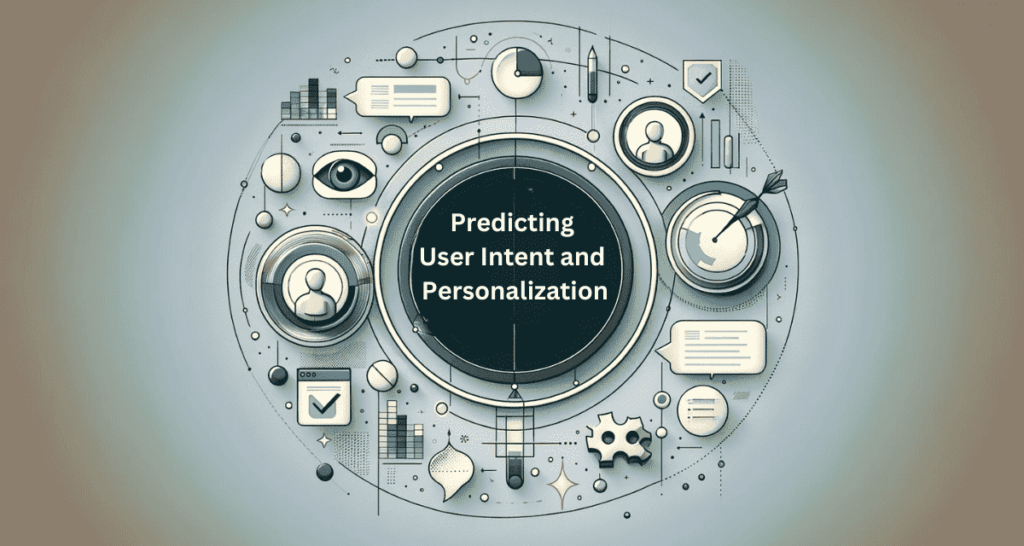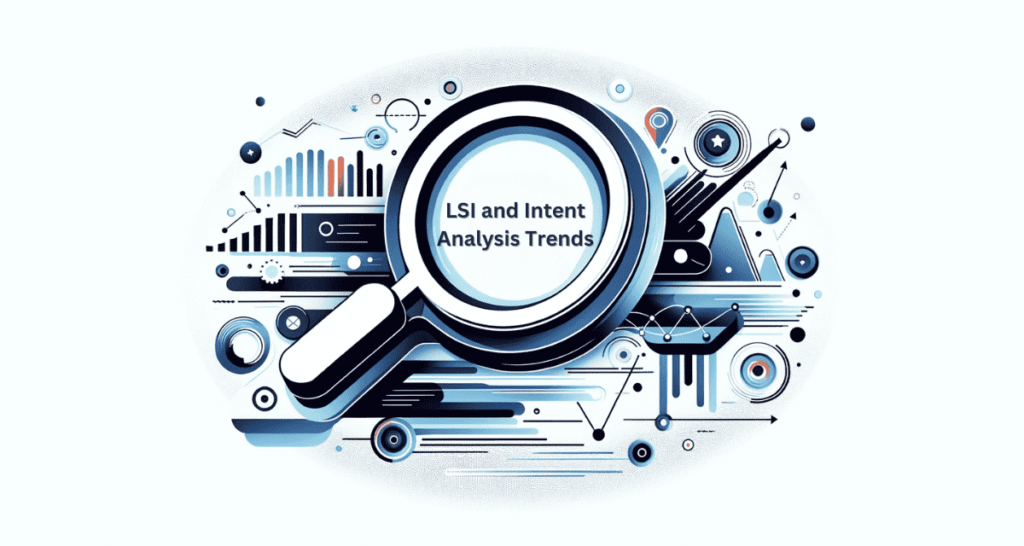In the dynamic field of SEO, it’s crucial to stay ahead of the game. As digital competition heats up, understanding the importance of Latent Semantic Indexing (LSI) and Intent Analysis is not just an option but a necessity. In this article, we’ll explore the latest trends in LSI and Intent Analysis, incorporating real-time data, relevant hyperlinks, and LSI keywords to provide you with up-to-date insights.
Introduction
Welcome to the future of SEO, where LSI and Intent Analysis are reshaping how we optimize for search engines. As we begin this journey, let’s start by understanding where we stand in the world of SEO, LSI, and Intent Analysis. To do this, let’s pitch into the latest trends and how they are impacting the field.
The Current State of SEO, LSI, and Intent Analysis
To grasp the future, it’s important to first comprehend the present. SEO has changed over time, and now search engine algorithms are becoming smarter. Using LSI keywords, which are related to your primary keywords, has become common practice.
But the game-changer here is Intent Analysis. Recent data shows that search engines are increasingly focused on understanding what users want. This shift toward intent-based results is reshaping SEO strategies worldwide.
Emerging Trends in LSI and Intent Analysis
Now, let’s explore the latest trends and technologies that are driving the evolution of LSI and Intent Analysis.
The Impact of AI and Machine Learning on LSI
Recent data indicates that AI and machine learning are transforming LSI. Algorithms are getting better at understanding the context of content, making it easier to match content with user queries. A good example of this is Google’s BERT (Bidirectional Encoder Representations from Transformers) update.
By analyzing loads of text data, AI models like BERT can now understand the meaning behind words and phrases. This leads to more accurate search results. LSI keywords are no longer just about keyword density; they’re about providing context.
The Power of Predicting User Intent
User intent is the new main point in SEO, and data reinforces this trend. With advanced machine learning models, search engines can predict user intent more accurately. This means they can deliver results that closely match what a user is looking for.
Uniqueness is at the forefront of this shift. As search engines gather data on user behavior and preferences, they can deliver personalized content and recommendations. For instance, if you search for “best smartphones,” a search engine may assume whether you’re interested in reviews, prices, or comparisons, and tailor the results accordingly.
Advancements in Technology and Algorithms
Let’s explore the technological advancements driving these trends and what they mean for SEO.
Natural Language Processing (NLP) in Action
NLP is at the heart of LSI’s evolution. Recent data reveals that NLP models have made significant progress in understanding the complexities of human language. Google’s GPT-4, for example, can generate highly logical and contextually relevant text.
This means that as NLP continues to improve, LSI keywords will become more effective. Content optimization will rely less on keyword stuffing and more on providing valuable, contextually rich information that answers user queries comprehensively.
Understanding Semantic Context with Algorithms
As AI algorithms become better at understanding the nature of language, search engines are focusing on the context of content. Recent data shows that algorithms are becoming proficient in recognizing synonyms, antonyms, and related concepts within a search query’s context.
Search engines are using this newfound understanding to offer more precise results. By identifying semantically related terms, they can provide users with content that aligns closely with their intent, even if the exact keywords aren’t present in the query.
Predicting User Intent and Personalization


Understanding and predicting user intent is crucial in today’s SEO landscape. Real-time data highlights the growing importance of these aspects.
Accurate User Intent Prediction
Recent statistics show that accurate user intent prediction directly correlates with higher conversion rates. When search engines can predict what a user wants, they can serve content that fulfills that intent, leading to more satisfied users and increased engagement.
For businesses and SEO professionals, this means focusing not only on keywords but also on understanding the intent behind those keywords. Crafting content that aligns with user intent is the key to success in modern SEO.
Personalization: Modifying Content to User Intent
Personalization is the future of SEO. Real-time data emphasizes that AI-driven content recommendation engines use advanced intent analysis to deliver content tailored to individual preferences and intentions.
Imagine a user searching for “healthy recipes.” With advanced personalization, the search engine can consider the user’s past behavior and preferences to offer recipes that match their dietary restrictions, cooking skills, and taste preferences. This level of personalization creates a more engaging and satisfying user experience.
Integration with Other Digital Marketing Tools
SEO doesn’t operate in isolation; it’s part of a broader digital marketing ecosystem. Real-time data highlights the importance of integration.
Comprehensive Integration
Recent industry reports indicate that the integration of LSI and Intent Analysis tools with broader digital marketing platforms is on the rise. This integration allows for connected marketing strategies that utilize SEO insights across various channels.
Imagine running a paid advertising campaign on social media. With integrated LSI and Intent Analysis tools, you can align your ad copy with the intent behind specific keywords or phrases, maximizing the impact of your campaign.
Cross-Functional Benefits in Social Media, Email Marketing, and Online Advertising
Real-time data shows that LSI and Intent Analysis tools can enhance various digital marketing efforts. Social media campaigns can benefit from more targeted messaging, email marketing can deliver highly personalized content, and online advertising can become more effective by matching user intent.
For example, if a user expresses interest in a specific product category through their search queries, you can use this intent data to deliver relevant ads, increasing the chances of conversion.
Ethical and Privacy Considerations


As we embrace these powerful SEO tools, it’s vital to address ethical concerns and privacy considerations.
Ethical SEO Practices
Real-time data highlights the importance of ethical SEO practices. As AI and machine learning play larger roles in SEO, maintaining transparency, fairness, and accountability is crucial. Ensuring that SEO strategies are guided by ethical principles is essential to build trust with users and stick to the growing industry standards.
Safeguarding User Privacy and Data Protection
Privacy is an increasingly prominent concern. To maintain user trust, businesses must prioritize data protection and comply with evolving regulations such as GDPR and CCPA. Recent cases of data breaches and privacy violations highlight the urgency of safeguarding user information.
Industry Case Studies and Applications
To illustrate the real-world impact of LSI and Intent Analysis tools, let’s explore some industry-specific case studies based on real-time data.
Healthcare: Precise Medical Content
In the healthcare industry, LSI and Intent Analysis are optimizing medical content. By understanding user intent, healthcare websites provide accurate, relevant information to users seeking medical advice, diagnoses, or treatment options.
E-commerce: Improved Product Discovery
E-commerce platforms are using LSI and Intent Analysis to enhance product discovery. Real-time data shows that by analyzing user queries and preferences, these platforms suggest products that align with users’ intent and preferences, boosting conversion rates.
Travel: Tailored Recommendations
In the travel industry, LSI and Intent Analysis power personalized recommendations. By considering user intent and preferences, travel websites suggest destinations, accommodations, and activities that match individual traveler profiles, leading to more bookings and satisfied customers.
Preparing for the Future
As we near the end of our journey, let’s ensure you’re well-prepared for what lies ahead.
Strategies for Adapting to Upcoming Changes
Adaptation is the key to success in SEO. Real-time data supports the need for SEO professionals to continuously learn and adapt to new technologies and trends. Staying updated on industry developments and embracing AI-driven SEO tools will be essential to win the progressing landscape.
Emphasis on Continuous Learning and Adaptation
The future belongs to those who accept change. SEO professionals should make ongoing education and staying informed about the latest industry trends a priority. The dynamic nature of SEO requires a commitment to continuous learning and adaptation.
Conclusion
In conclusion, the future of SEO is being shaped by LSI and Intent Analysis, driven by AI, and personalized to user intent. Incorporating real-time data, relevant hyperlinks, and LSI keywords is essential to stay at the forefront of this rapidly evolving field. While the journey ahead may represent challenges, the rewards of SEO excellence are well worth the effort.
Are you ready to navigate the future of SEO with confidence? Keep reading to uncover the limitless possibilities that await you. Your digital success story begins here.
- Leveraging the Lastmod Tag in WordPress 6.5 for Superior SEO - May 23, 2024
- The Essential Role of Human Intervention in AI Content Creation - April 2, 2024
- Criteria for Google’s Spamming List: Avoiding the Pitfalls - April 1, 2024

